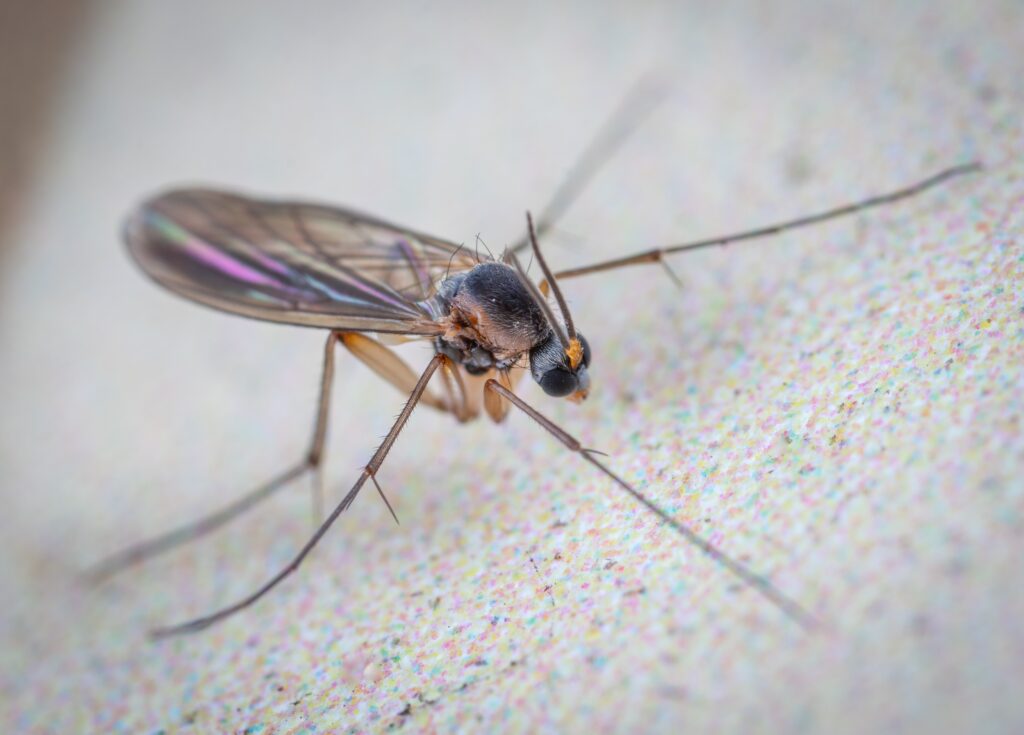Whether you are a hard-core dedicated plant parent with many potted plants or just happen to have a houseplant or two at your home or office, there is a good chance you’ve dealt with fungus gnats at some point.
Fungus gnats
You know them! Those annoying tiny little black flies that suddenly appear out of nowhere! These fungus gnats tend to be found hovering around your houseplants, flying around your face, or even worse, nose-diving into your mouth or up your nostrils while you are on a work zoom call! Yes!! We all know and hate them!!
Unfortunately, you may also know, that once these pesky little flying insects take hold in your home, they can be pretty challenging to get rid of!
But rest assured, ThePlantBlogger.com is here to help!
In this post, we will go over the tried and tested, and proven methods we have used to exterminate fungus gnats in houseplants!
With our help, you will have them cleared up for good, in no time!
We will briefly discuss the ten different natural ways we have used to alleviate your beloved plants of these annoying bugs.
We will also provide some helpful tips on how to prevent them from coming back.
With a little patience, you’ll have your houseplant collection pest-free in no time!
The shortlist
- Remove any standing water from the catch pot or saucer, If possible, allow any moist soil to dry out completely
- Add beneficial nematodes to your potting soil
- Add beneficial bacteria to your potting soil
- Use yellow sticky traps
- Place a shallow dish filled with water and a few drops of liquid dish soap near the infested plant
- Quarantine or cover the infested plants with a clear plastic bag
- Take the fungus gnat infestations outside and give it a good hose down
- Re-pot your plants with fresh sterilized soil
- Add a layer of sand, gravel, or moss to cover the potting soil
- Apply a hydrogen peroxide solution
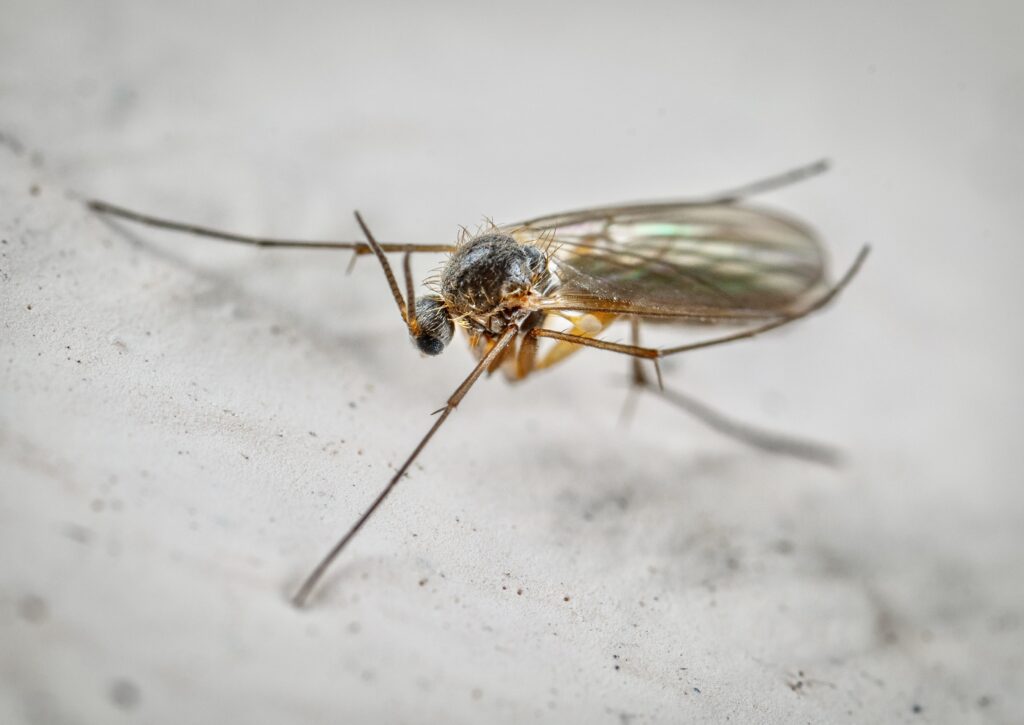

First off let’s Identify if you have fungus gnats
Compared to other houseplant pests, like spider mites or melee bugs, fungus gnats are usually pretty easy to spot right away.
At first glance, you may be thinking that you just have a few fruit flies, but if you don’t have a bowl of rotting fruit on your counter it’s probably not the case.
Fruit flies are usually red in color, are slightly larger, and look very different up-close from fungus gnats.
Fungus gnats are tiny little black flies that live in your plant’s soil while feeding on decaying plant material and soil fungus. Most indoor plants’ potting soil is rich in Organic material and most indoor plants prefer somewhat damp soil, which is the perfect breeding ground for these little devils to take hold. These houseplant pests lay their eggs and multiply quickly, so infestations will grow fast and their population will continue to accumulate rapidly, which can quickly become overwhelming.
Signs of Fungus Gnats
1. Look for small black flies hovering around your plants.
2. Check for fungus gnat larvae in the soil. A great tip for this is to slice a potato into pieces and place them on the soil surface. The potato will draw the larvae out of the soil to be eaten.
3. See if the leaves on your plants are showing signs of stress like wilting or turning brown.
4. Check the moisture level of your plant’s soil, is it always damp?
5. Smell the soil – if it smells musty or funky, there is a good chance you may have fungus gnats.
6. Inspect the pot or container your plant is in – if it’s made of plastic, or has no drainage holes, there is a good chance you have a fungus gnat problem.
1 . Remove any standing water from the catch pot or saucer, If possible, allow any moist soil to dry out completely
Damp soggy soil is not only bad for most house plants but potentially leads to rotting roots or root rot. It is also the perfect breeding ground for fungus gnats by providing them with everything they need to thrive – moisture and decaying organic matter.
Soil gnats lay eggs in the moist soil where the larvae feed on the plant roots and organic matter while developing into adult flies. As this cycle repeats, the population of fungus gnats exponentially grows, and they can quickly become a big nuisance.
One way to help reduce the number of, or prevent fungus gnats, in general, is to allow the soil to dry out between waterings.
Note:
Unfortunately, not all plants can tolerate periods of drought, which can make this approach tricky and probably not the right option for you.
Either way, be sure not to overwater your plants, as this will only create more humidity and ideal conditions for fungus gnat larvae to thrive.
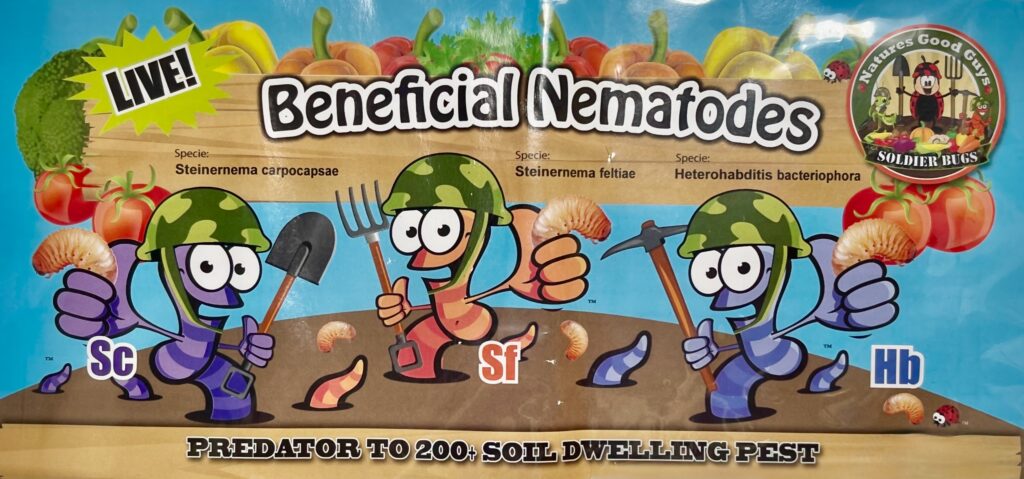

2 . Add beneficial nematodes to your potting soil
This is my favorite true and tried option, and is the way I was able to get rid of fungus gnats for good in my rare aroid collection. Beneficial nematodes are tiny, parasitic worms that feed on the larvae of fungus gnats, cockroaches, and other types of pests that larvae live in the soil.
They are readily available for purchase at most garden centers or can be found online. To apply the nematodes, mix them with room temperature, chemical-free water, and pour the mixture over the soil around the infested plant.
Be sure to cover the entire area with the mixture, as nematodes need to come into direct contact with the larvae in order to be most effective.
The nematodes will actively kill the larvae and will be able to live in the soil for some time before they eventually die off themselves. I recommend repeating this process every few weeks as necessary until the fungus gnat population is decimated.
Note:
As a preventative measure, I recommend using this method once a quarter moving forward. This will prevent any future fungus gnats from finding a home in your potted plants.
3 . Add beneficial bacteria to your potting soil
The use of beneficial bacteria is another great natural option to help get rid of fungus gnats. The use of biological control like the bacteria Bacillus thuringiensis var. israelensis (BTI) is a naturally occurring bacteria that kill fungus gnat larvae. It is not only completely safe for people, pets, and the planet, but it is also very effective at targeting unwelcome pests beneath the soil surface.
To apply the BTI solution, mix it with room temperature, chemical-free water, and pour the mixture over the soil around the base of the infested plant. Be sure to flood the container until water comes out of the drainage holes, this also works best when it comes into direct contact with the larvae.
I recommend repeating this process every time you water your houseplants until you get rid of fungus gnats completely.
Note: Keep it going
This method can prevent fungus gnats from returning and is easy to add to your watering routine.
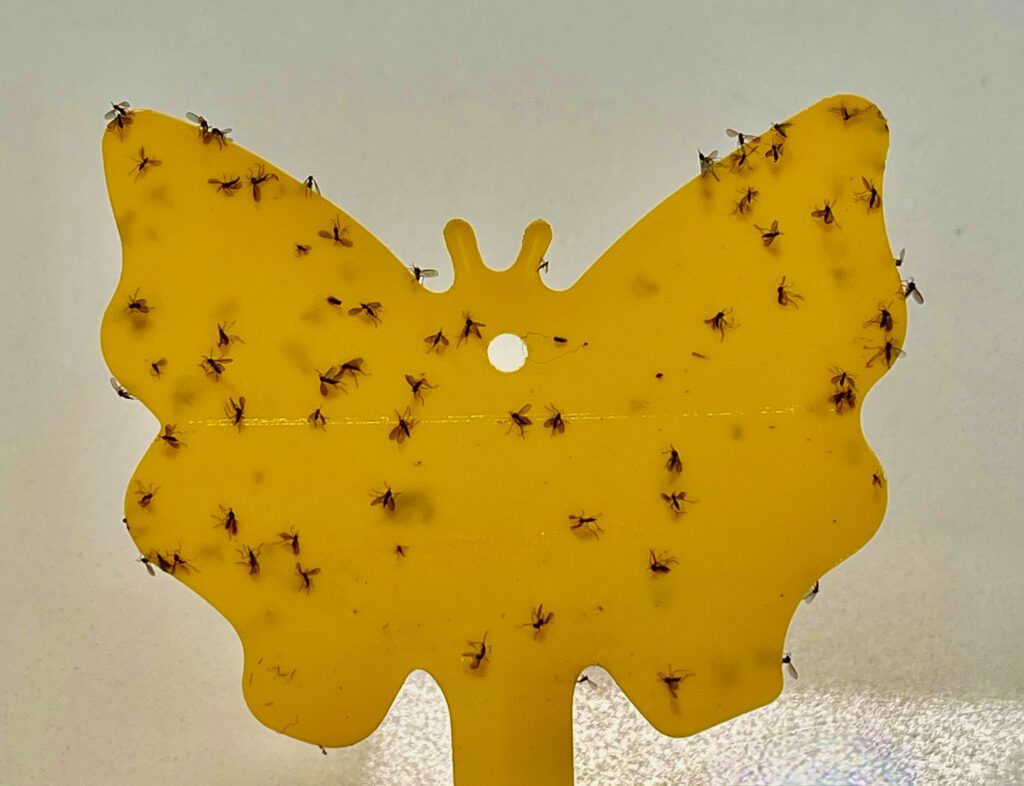

4 . Use yellow sticky traps
The use of bright yellow sticky traps is another effective way to help get rid of fungus gnats and help prevent fungus gnat infestations from spreading. These traps catch fungus gnats by attracting them with the promise of food, then trapping them as they land on the sticky surface where they perish.
While this option will kill fungus gnats, it will not eliminate the problem at the source. It will trap the adult gnats before they continue laying eggs and will inform you as to which plants they have infested.
These traps are inexpensive and readily available for purchase at most garden centers or online retailers. To use the traps, simply remove the protective paper backing and place the traps in the pots or near your infested plants.
Note:
Be sure to replace the traps as needed, for they will become covered in adult gnats, dust, and debris over time and will lose their effective sticky surface.
5 . Place a shallow dish filled with water and a few drops of liquid dish soap near the infested plant
This is one of my favorite low-cost, do-it-yourself passive traps!
Place a shallow dish filled with water and a few drops of liquid dish soap near the infested plant.
The water in the dish will attract the fungus gnats, and the soap will break the surface tension of the water and drown them. Be sure to replace the soapy water mixture weekly or as needed, for it will either evaporate or become filled with adult fungus gnats, dust and debris over time.
Note:
I tend to leave these traps out but hidden year-round. I find they not only capture the dreaded fungus gnat adults but also moths, fruit flies, and mosquitoes.
6 . Quarantine or cover the infested plants with a clear plastic bag
If you have only a few plants that are infested with fungus gnats, you can quarantine them by covering them with a clear plastic bag. This will prevent the adult gnats from escaping and laying new eggs in other plants in your space.
The bag should be secured around the pot or container with a tight-fitting rubber band or piece of string. Be sure to check the bag daily and remove it when the plant has dried out, for it is important to allow the soil to dry out between waterings.
Don’t forget about your quarantined plants, they still need attention and to be watered from time to time.
7 . Take the fungus gnat infestations outside and give it a good hose down
If you are blessed to have a garden hose and the outdoor space to use it, take the infested plant outside and give it a good hose down. This is always a good idea to do from time to time for all of your plants, fungus gnat infestations or not.
This spontaneous shower will help to rinse away the culmination of excess salts from the soil and will flush out many of the fungus gnat eggs and larvae.
Be sure to allow the plant to dry thoroughly before returning it to its home.
8 . Re-pot your plants with fresh sterilized soil
If you have a full-blown fungus gnat infestation, one of the best things you can do is re-pot your plants with fresh sterilized houseplant soil. This will help to get rid of any eggs or larvae that may be present in the soil and will give your plant a fresh start.
Be sure to only use sterilized soil from a reputable garden center or online retailer, as this will help to eliminate any potential problems in the future.
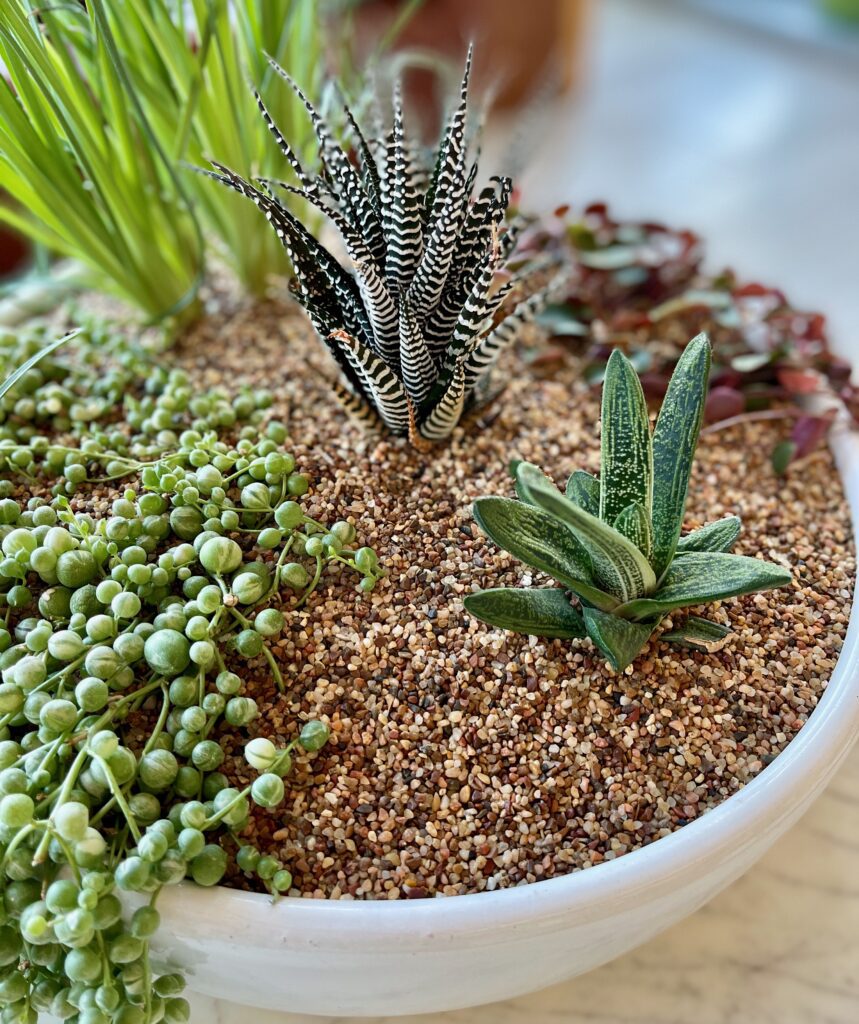

9 . Add a layer of sand, gravel, or moss to cover the potting soil
Adding a layer of sand, gravel, or moss to cover your potted houseplants’ soil, is not only functional but aesthetically pleasing!
This will help to deter fungus gnats from laying eggs in the soil by creating a breathable barrier, making it difficult for them to reach the soil surface.
Be mindful
When applying sand, gravel, or moss to the affected plant, use it sparingly to avoid suffocating the tropical plant’s roots. Applying a heavy layer of sand or fine gravel can be harmful to your plant.
Note:
For best results combine this idea with the sticky traps, they will work in conjunction with each other to trap the adult fungus gnats before they can find a place to lay new eggs.
10 . Hydrogen peroxide solution
Lastly, in an attempt to kill Fungus Gnats in Houseplants, you can try flushing the soil with a dilution of equal parts hydrogen peroxide and water.
Hydrogen peroxide is water (H2O) with an extra oxygen molecule (H2O2), both of which are needed for the plant’s overall health. This solution will help to clean the plant’s roots and in my experience will not harm the plant in the process.
The hydrogen peroxide will also help kill any eggs or larvae that may be present in the soil and will help to get rid of the infestation.
I have to admit:
I was nervous when I tried this option on my Calathea, but in testing this approach, the only issue I found is that when the solution comes in contact with dry soil it foams up and can make a mess. The plant responded well to the treatment and made a gnat-free recovery!
Hopefully, this post has given you some helpful tips on how to get rid of fungus gnats from your house plants.
Remember:
The key to getting rid of these pests is to be persistent and try a variety of different methods until you find one that works for you.
Thanks for reading!
We hope you found this blog post helpful in your quest to get rid of pesky fungus gnats! If you have any questions or would like to share your own tips, please leave a comment below.
